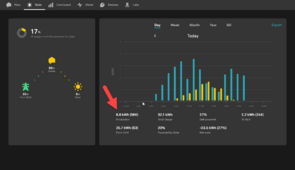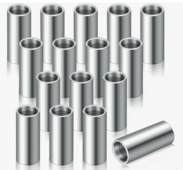I don’t know anything about your sense meter and how accurately it computes Watts from AC current and voltage.
You are doing exactly the correct thing and my advice to you is to focus on the things you can directly measure, meaning AC current and AC voltage.
Because of the missing panel, you won’t be able to max out the 6th inverter and won’t get a true flat spot.
2.09 x 6 = 12.54A and it sounds like you are already getting very close to that despite the missing panel.
The 6th dual Microinverter being fed by a single 405W panel might max out near 90% or 365W at peak production so you might get 365W x 95.5% = ~348W of AC output from that panel on a good day.
At 240VAC of grid voltage, that 384W would translate to 1.6A.
So I’d expect peak current without the 12th panel to peak out at 5 x 2.09A + 1.6A = 12.05A.
From what you’ve indicated, your already there.
My advice would be:
-Ignore Sense for now and get that 12th panel installed.
-Confirm you get a 1-2 hour flatspot of max current output of 12.5AAC through peak hours on a clear day.
That confirms that the inverters are doing what they are rated to do and are operating properly.
Now you want to confirm that your utility meter is properly crediting your solar production.
Grid voltage bounces up and down and typically increases close to 250VAC during peak solar hours (at least where I live), so mapping AAC to Watts is a challenge (let alone estimating Watt Hours).
Your Sense ought to do this for you but you first need to confirm it ties with your utility meter. If the Sense is monitoring grid mains wires and the hourly kWh reported by your utility ties with what the Sense reports, that pretty much confirms it is accurately sampling AAC and VAC to compute Watts.
So then that leaves the whole domain of Power Factor.
Of you have any inductive loads such as a fridge running, they get a ‘free ride’ in terms of power consumption because the reactive power they consume does not figure into the Watts measured by your utility meter and you are not charged for them.
Your NEP600s have power factor correction, meaning they will supply that reactive power rather than the grid, which means the AC current is the same but phase-shifted so that your utility meter and your sense will not count that phase-shifted current component when they calculate Watts.
From what I can see, NEPs monitor is correctly accumulating output power but merely based on AAC x VAC without accounting for any phase-shift between the two caused by Power Factor Correction.
A way you can confirm this would be to shut off all of your inductive loads spanning a peak production hour one day (probably after that last panel has been installed

).
If you get kWh data for a peak production hour with resistive loads only (or even no loads if you can shut all breakers down for an hour) from your utility and the Sense and they agree with the kWh product in the NEP monitor reflects at the end of that hour minus the beginning of that hour (only trust the number in red, not the graphed data), you know your NEP microinverters are performing as they should and it is just the shenanigans that goes into how Watts are calculated based on resistive power only that is causing the discrepancy you see.
The way I figured out all of this stuff is that I have battery-powered GTIL inverters that can offset overnight load.
But when I did so, I was very confused to see that my daily net export decreased significantly.
My overnight load is dominated by inductive loads (5 fridges/freezers) and I finally understood that the average 300W consumption my utility was reflecting (and charging me for) was only a portion of the AC current needed to run them.
So once all of that current was being provided by my GTIL inverters rather than the grid, my overnight free ride was over and I had to cover all reactive power consumption from the energy stored in my battery.
Utilities charge ~110% for resistive Watts they measure because they assume ~10% reactive power for residential customers.
So if the ‘gap’ you are seeing between kWh reported by Sense and NEP monitor is 10%, it’s probably mostly that.
Will your Sense report reactive power as well?








